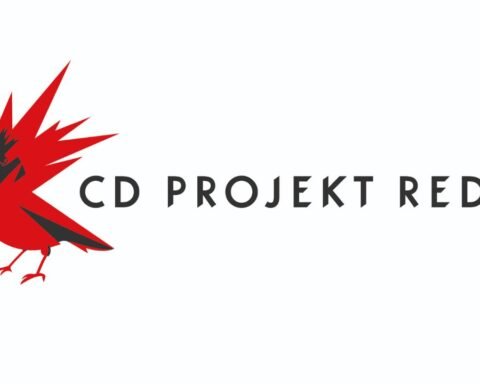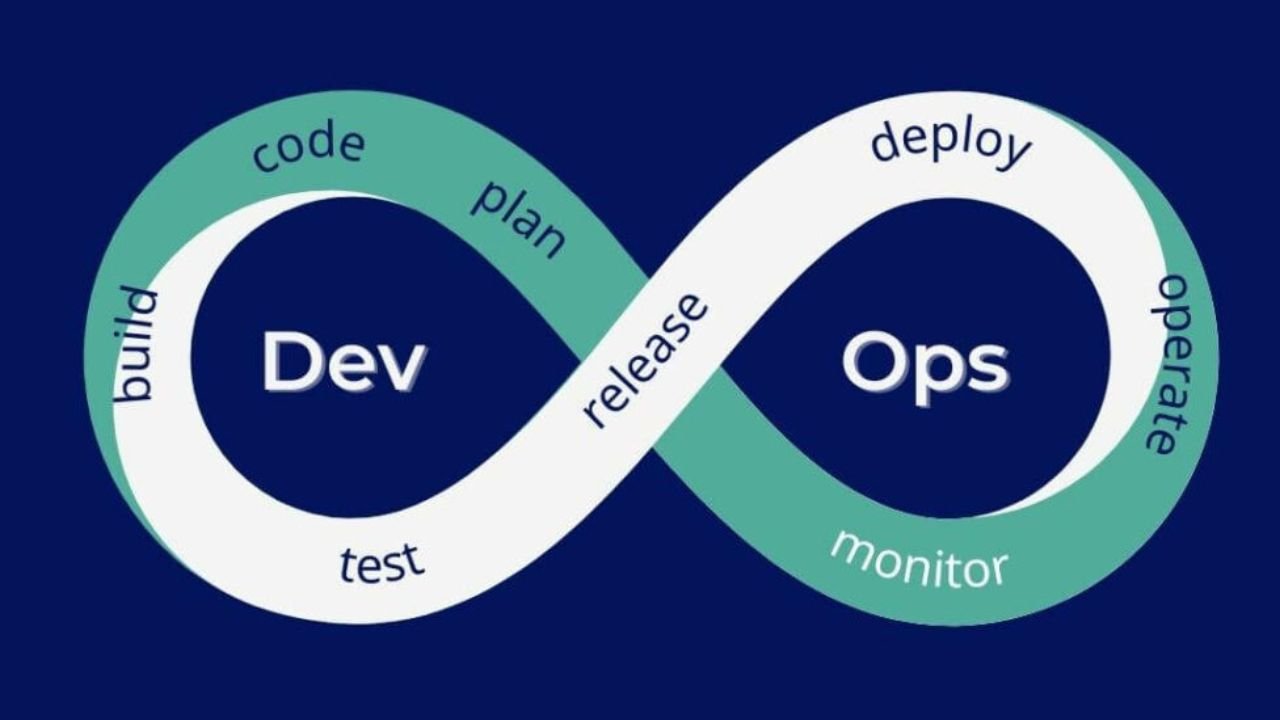DevOps is a new way of making software that combines the words “Development” and “Operations.” Its goal is to make it easier for software developers and IT operations professionals to work together. DevOps started in the late 2000s as a way to meet the growing demand for faster and more flexible software delivery. Since then, it has grown into a set of practices that encourage a culture of teamwork and constant improvement. Automation, iterative development, and proactive communication are some of the key principles that make it work. These principles help teams that used to work in silos work together more efficiently.
One of the main ideas behind DevOps is to get rid of the walls that keep development and operations teams apart. This integration makes everyone responsible for the whole software development lifecycle, from the first design to deployment and maintenance. Companies can make their software better and shorten their development cycles by encouraging teamwork and creating an open culture. In today’s fast-paced tech world, where companies are under more pressure than ever to deliver strong software applications quickly, this is becoming more and more important.
There is no way to overstate how important DevOps is. With a DevOps approach, companies can improve their operational efficiency, speed up their time to market, and ultimately provide better products and services that meet the changing needs of their customers. This game-changing plan makes it possible to use agile methods in software development, which helps teams work toward business goals and listen to what customers want. Because of this, a lot of businesses have said that their customers are happier, their deployments fail less often, and they can recover from incidents faster.
In general, the use of DevOps practices is seen as a major change in how software is made and kept up to date. This is because collaboration and flexibility are becoming more important in today’s tech-driven world.
The Basic Ideas Behind DevOps
DevOps is a new way of making software that is based on a few key ideas that together encourage good teamwork and smooth operations. Collaboration is one of the most important ideas behind DevOps. This stresses the need to break down barriers between development and operations teams and promote a culture where both groups work closely together throughout the software development lifecycle. Organizations can boost productivity and create an environment that encourages everyone to take ownership of the software products by making it easier for people to talk to each other and work toward common goals.
Automation is another basic idea behind DevOps. Automated tools and processes reduce the need for manual work, which makes it easier to do tasks that need to be done over and over again. This speeds up work and makes it less likely that people will make mistakes. Automation covers a lot of ground, from testing to deployment to managing infrastructure. When teams use automation in the software development process, they can focus on delivering value instead of getting stuck on boring tasks.
In the world of DevOps, Continuous Integration and Continuous Delivery (CI/CD) are also very important. These methods let developers regularly add their code changes to a shared repository, where they are then automatically tested and deployed. Companies can make sure that code changes are always checked by using CI/CD pipelines. This makes software products more reliable and lets them be delivered to users quickly. This makes feedback loops happen faster and makes teams more responsive to what the market wants.
Finally, good monitoring is very important in the DevOps world. Teams can learn about the operational health of applications by constantly keeping an eye on performance and user experience. This proactive approach makes sure that problems can be found and fixed quickly, which helps keep the operational environment stable. In general, the core principles of collaboration, automation, CI/CD, and monitoring are very important for changing the way software is made so that it is more flexible, efficient, and meets the needs of users.
Collaboration’s Place in DevOps
In DevOps, it’s very important for development and operations teams to work together. Working together well is a key part of making the software development lifecycle more efficient, which in turn boosts overall productivity and efficiency. Using strong communication strategies is an important part of encouraging people to work together. Teams can keep talking to each other all the time by using tools like instant messaging, video conferencing, and project management software. This way, they can quickly deal with problems and share ideas.
Also, it is important to set up teams that work across departments. In a traditional setup, development and operations often work separately, which can cause problems and slow things down. But in a DevOps setting, these teams often work together, which helps them all reach their goals and makes their work easier. For example, having developers do operational tasks and vice versa can help everyone understand each other better, which can help them make better decisions and solve problems faster.
Tools that are made just for helping people work together and share knowledge, like version control systems, continuous integration/continuous deployment (CI/CD) pipelines, and containerization platforms, are also very important to the collaborative process. These tools not only make it easy to integrate code, but they also encourage teams to be open and responsible. By using these kinds of tools, companies can make sure that everyone has access to the same information, which lowers the risk of mistakes caused by misunderstandings.
Real-life examples of how well DevOps teams can work together show how much better the quality of the software is. Companies that put money into working together have said that they can release products faster, have fewer bugs in production, and make customers happier. Companies can get the most out of their development and operations teams by breaking down silos and encouraging teamwork. This will lead to better software delivery and more innovation.
Automation is what makes DevOps work.
Automation is becoming more and more important in the DevOps method as software development moves quickly. By automating tasks that need to be done over and over, companies can speed up their development processes, boost productivity, and lower the risks that come with making mistakes. Automation includes many tasks, such as testing code, deploying it, and setting up infrastructure. It is essential for teams that want to quickly deliver high-quality software.
One of the best things about adding automation to the DevOps lifecycle is that it makes things go faster. In traditional development cycles, there are often time-consuming manual tasks that can hold up releases. But with automation tools, these tasks can be done quickly and consistently. For example, automated testing frameworks can run hundreds of test cases in just a few minutes, giving you immediate feedback on how good your code is. This quick cycle of testing and deployment makes sure that developers can quickly fix any problems, which speeds up the time it takes to get new features and products to market.
Another good thing about automation is that it can cut down on human error, which is a common cause of bugs and crashes in software. Automated scripts that are run consistently make processes less variable, which means that teams can trust the results. Automation also helps create a culture of accountability and teamwork by letting team members focus on more important tasks instead of boring, repetitive ones.
When putting automation into a DevOps framework, companies should think about a number of best practices. First, starting with small automation pilot projects can help teams learn and adapt without using up too many resources. Second, it’s very important to choose the right tools that fit with the needs of the business and the way things are already done. To make things more efficient and keep up with changing project needs, it’s important to keep evaluating automation practices. Companies that use automation in their DevOps projects will be better able to come up with new ideas and compete in the fast-changing software industry.
Continuous Integration and Continuous Delivery (CI/CD)
Continuous Integration (CI) and Continuous Delivery (CD) are two important parts of the DevOps framework that have changed the way software is developed. CI stresses how important it is for teams to regularly add code changes to a shared repository, sometimes even several times a day. This process not only helps find integration problems early, but it also encourages developers to work together, which greatly improves the quality of the software they make. Different CI tools, like Jenkins, Travis CI, and CircleCI, make this process easier by automating the building and testing stages. This makes sure that any bugs that might come up are found and fixed quickly.
Continuous Delivery, on the other hand, builds on CI by automating the release process. This makes it possible to deploy application’s more reliably and Tests Continuous Delivery, on the other hand, builds on CI by automating the release process. It makes sure that the software can be put into production at any time, which lets teams quickly give users new features and updates. AWS CodePipeline, GitLab CI/CD, and Bamboo are some of the tools that can help businesses automate the deployment pipeline. This means less manual work and a lower chance of making mistakes.
Adding CI/CD practices to the DevOps framework has a number of benefits. First, it speeds up the development cycle, which means that new features and apps can be released to the public faster. Second, it makes software better by constantly testing and integrating it, which makes the product more reliable. Finally, it encourages teams to keep coming up with new ideas and ways to make things better by creating an environment where people can work together and talk to each other. Additionally, companies that use CI/CD methods often say that their customers are happier because they can respond to feedback and requests more quickly.
DevOps: Monitoring and Feedback
In DevOps, good monitoring and feedback systems are very important for making sure that software development always gets better. Teams can learn important things about how well an application works and how users interact with it by using advanced monitoring tools. This lets them make decisions based on data that improve the overall quality and functionality of the application. These tools can keep track of different performance metrics, like response times, error rates, and system availability. This makes sure that applications meet both users’ expectations and operational benchmarks.
It is very important to keep an eye on things in real time. Monitoring solutions make it easy to see how well a system is working right away, which helps technical teams find problems before they become big problems. Using monitoring solutions also helps find bottlenecks in the system, which makes it run more smoothly and makes applications respond faster. Also, data that users create can show how people actually use something, which is often different from what was thought would happen.
Feedback loops are an important part of the DevOps culture because they make it possible for people to keep learning and changing. When development teams use feedback from monitoring tools, they can make their products better more quickly by focusing on changes that make users happier. Organizations that promote a culture of feedback make it easier for everyone to talk about performance metrics and user experiences. This opens the door to collaborative problem-solving that helps the whole team. Not only does this approach boost morale, but it also makes sure that everyone involved in the development process is working toward the same goals.
In the end, adding thorough monitoring plans and strong feedback loops are important parts of the DevOps journey. These practices not only help with short-term efficiency, but they also set the stage for long-term growth and innovation in software development and operational frameworks.
Problems with using DevOps
Even though moving to DevOps has many benefits for software development and operations, it also comes with a lot of problems that companies need to deal with. One big problem is that teams don’t want to change. Many employees may be worried about changing the way things are done, especially if they are used to doing things the old-fashioned way. This doubt can make things less likely to be collaborative, which is what DevOps wants to promote.
Another problem that comes up when companies switch to DevOps is that there aren’t enough people with the right skills. To successfully use DevOps, you need to have a mix of skills in software development, testing, and IT operations. Sadly, a lot of teams might not have the right skills in areas like cloud computing, automation tools, or continuous integration/continuous deployment (CI/CD) processes. This lack of skills can make it harder for teams to do their jobs and slow down the move to a more agile environment.
Also, combining different tools can be very difficult. There are many options for version control, configuration management, monitoring, and testing, so companies may have a hard time choosing the right ones and making sure they all work together. If tools don’t work well together, it can create silos between development and operations. This goes against the main goal of DevOps, which is to break down these barriers.
Companies can use a number of strategies to get around these problems. It’s important to create a culture of open communication because it encourages team members to share their worries and work together to find solutions. Comprehensive training programs can also help close the skills gap by giving teams the confidence to use new technologies. Finally, using a phased approach to integrating tools can make transitions go more smoothly. This way, teams can slowly get used to new workflows without too many problems. These strategies will help organizations get ready to take advantage of the power of DevOps to change things.
Case Studies: DevOps Implementations That Worked
There are many examples of companies that have successfully adopted DevOps practices in the real world. These show how this method can change the way things are done in many fields. Netflix is a well-known example of a company that changed the way streaming services work by using DevOps. Netflix created a culture of continuous integration and deployment to deal with the problems of scaling their infrastructure and keeping it available all the time. This made it possible for them to quickly add new features while still making sure their services were reliable. Because of this, Netflix has kept its reputation as a leader in the video streaming industry, gaining a lot of new subscribers and making users happier.
Target is another great example. The company wanted to stay competitive in the retail sector, so it worked to improve how it delivered software. The company had trouble with slow release cycles and system outages that happened often and hurt customer service. Target used DevOps practices to implement automated testing and continuous delivery, which helped development and operations teams work together better. This change caused deployments to happen ten times more often and made changes happen faster, which allowed Target to quickly respond to customer and market needs.
Another example to think about is American Express, a financial services company that realized they needed to be more flexible in their software development in order to keep up with the digital transformation in the finance industry. They added DevOps to their workflows to make them more efficient, improve communication, and encourage a culture of innovation because the old models weren’t working. This made projects finish faster and made the software better, which gave them a big edge over their competitors and made customers trust them more.
These examples show how useful and widely applicable DevOps is. They show that companies in many different fields can do well by using this method. Successful use of DevOps in areas like entertainment, retail, and financial services can serve as useful examples for other teams that want to make similar changes.
DevOps in the Future
Technology is changing the way software is developed and run very quickly. It is clear that DevOps practices will change a lot in the future. For example, automation processes will use new technologies like artificial intelligence (AI) and machine learning (ML). These technologies could make teams more efficient and productive by letting them automate routine tasks and focus on more important ones. For example, AI-powered predictive analytics can find problems before they happen, which greatly cuts down on downtime and makes service delivery better.
The future of DevOps will focus more and more on security practices, which are sometimes called DevSecOps. This is in addition to automation. As companies learn more about cybersecurity threats, it’s important to include security in the DevOps pipeline. This proactive approach makes sure that security is built into every step of the software development lifecycle instead of being an afterthought. Because of this, teams will need to use stricter security measures and tools that let them keep an eye on things and make sure they follow the rules.
As cloud computing and containerization become more popular, the DevOps culture will also change. As hybrid and multi-cloud environments become more common, development, operations, and security teams need to work together more to make sure that everything works together smoothly and is deployed correctly. Using tools that make it easier for people to talk and work together on different platforms will help this integration happen. This will make teams work better together and be more flexible.
In the end, the development of DevOps will have a huge impact on the tech industry, forcing businesses to constantly come up with new ideas and use new methods. DevOps is an important part of modern software development and operations because it is collaborative and flexible, which helps businesses better meet the needs of their customers.
























